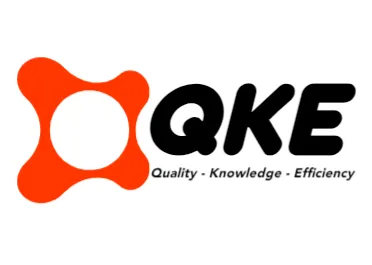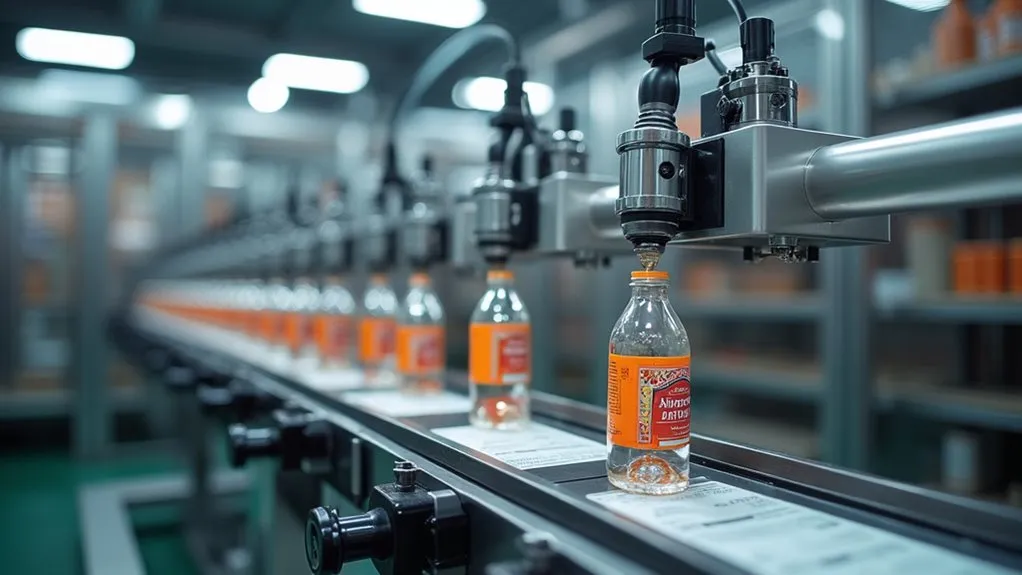Automatic labeling machines offer substantial benefits by enhancing production efficiency with speeds of 1,800 to 120,000 labels per hour. They ensure precision within a millimeter using advanced sensors and servo-driven applicators, achieving uniform, wrinkle-free label application. Downtime is minimized through reliable operation and continuous label replenishment. Cost efficiency is improved by reducing labor and material waste. These systems optimize workflows and elevate product quality. Explore further to uncover additional operational advantages.
Key Takeaways
- Boosts production with speeds of 1,800 to 120,000 labels per hour, eliminating bottlenecks.
- Minimizes downtime through reliable operation and label replenishment without pauses.
- Ensures precision with millimeter accuracy using advanced sensors and servo-driven applicators.
- Delivers uniform label application, enhancing product appeal with consistent alignment.
- Cuts costs by reducing labor, errors, and material waste while optimizing workforce.
Boosted Productivity and Operational Speed

Efficiency stands as a cornerstone of modern manufacturing, and automatic labeling machines significantly enhance productivity and operational speed in this domain. These systems deliver Enhanced Throughput by operating at remarkable speeds, labeling hundreds to thousands of products per hour—ranging from 1,800 to 120,000 labels depending on the model. This capability eliminates bottlenecks at labeling stations and supports production scaling without a proportional rise in labor costs. Automation also shortens cycle times, maintaining consistent rates without manual interruptions.
Moreover, these machines ensure Minimized Downtime through reliable, continuous operation and integration into production lines. High-quality construction reduces maintenance needs, while features like label replenishment during operation prevent pauses. Reduced errors further limit rework, sustaining workflow momentum. Additionally, their versatility allows adaptation to various product shapes and sizes, ensuring consistent performance across diverse manufacturing needs. By freeing workers from repetitive tasks and enabling seamless integration with other systems, automatic labeling machines optimize labor utilization and streamline overall operational efficiency in manufacturing environments.
Superior Precision and Uniformity

Precision in labeling is paramount for maintaining product integrity and brand reputation, and automatic labeling machines excel in delivering unmatched accuracy. These systems adhere to stringent Precision Standards by employing advanced technologies such as optical sensors and servo-driven applicators, achieving label placement accuracy often within a millimeter, even at high speeds. Human errors, such as misplacement or incorrect orientation, are virtually eliminated, ensuring near-zero error rates.
Moreover, automatic labeling machines guarantee a Uniform Appearance across all products, enhancing brand consistency and professionalism. Labels are applied smoothly without wrinkles or bubbles, with consistent spacing and alignment, regardless of container shape or label type. Real-time monitoring through integrated vision systems further ensures quality control by detecting and correcting misalignments instantly. This meticulous attention to detail not only meets high Precision Standards but also elevates product appeal, reinforcing consumer trust through a polished and Uniform Appearance.
Cost Efficiency and Workforce Optimization

Beyond the remarkable accuracy and consistent presentation offered by automatic labeling machines, their impact on operational economics and human resource management proves equally significant. These systems drastically reduce labor costs by eliminating manual labeling tasks, minimizing errors, and preventing repetitive strain injuries, thus lowering expenses related to rework and recalls. Production speed surges with automated application rates, enhancing throughput and operational efficiency while reducing material waste, which aligns with Environmental Sustainability goals.
Moreover, workforce reallocation allows employees to transition from monotonous tasks to strategic roles, fostering skill enhancement and job satisfaction. The integration of automated systems ensures compliance with industry standards, supporting Regulatory Compliance through consistent output. Long-term, the return on investment manifests in reduced operational costs, fewer recalls, and higher revenue potential. By optimizing human resources and streamlining processes, automatic labeling machines deliver substantial cost efficiency and competitive advantage in modern production environments.

 Tiếng Việt
Tiếng Việt 日本語
日本語 中文 (中国)
中文 (中国) 한국어
한국어
